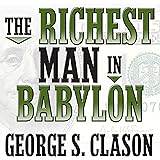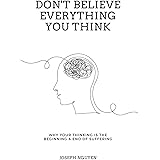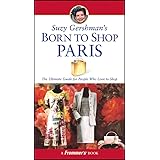Does the allure of a shimmering gold necklace or a gleaming bracelet extend beyond mere fashion? Can your beautiful gold jewelry pieces actually be a smart investment? The video above delves into this fascinating question, sharing personal insights and showcasing recent exquisite purchases. We’ve all admired gold, but understanding its potential as a tangible asset requires a closer look at what makes it truly valuable, not just visually stunning.
More Than Just Sparkle: Why Gold Jewelry Captivates
Gold jewelry holds a unique place in our hearts and culture. It’s not simply an accessory; it’s a statement, a symbol, and often, a cherished memory. For many, like the speaker in the video, gold pieces become personal favorites, integral to accessorizing an outfit, even the simplest ones. Imagine if you could wear your investments! Gold jewelry offers this unique blend of utility and beauty, allowing you to enjoy your asset every day.
Beyond daily wear, gold jewelry carries significant emotional weight. It’s a common practice to pass down precious pieces through generations, transforming them into valuable family heirlooms. This tradition underscores gold’s enduring appeal and its perceived stability, making it an item of both sentimental and potential financial worth.
Diving into Personal Treasures: Karats, Weight, and Design
The speaker’s recent acquisitions beautifully illustrate the variety and appeal of modern gold jewelry. Let’s explore these pieces and what they tell us about gold’s characteristics:
- The LV-Inspired Gold Necklace: This piece, an 18 karat Saudi gold weighing 19.75 grams, exemplifies how design influences desirability. While not an official Louis Vuitton piece, its inspiration from a luxury brand adds a layer of aesthetic value. At 19.75 grams, it’s a substantial item, and its 18 karat purity means it contains 75% pure gold, balanced with other metals for durability. The five distinct LV-inspired logos and intricate dual chains showcase meticulous workmanship, a crucial factor in jewelry value.
- The Tiffany-Inspired Necklace: Another beautiful example, this 18 karat Saudi gold necklace weighs 12.4 grams and features a heart pendant on a 16-inch chain. Like the previous piece, its design inspiration elevates its appeal. The lighter weight still represents a significant amount of gold, offering a more understated yet elegant investment in gold jewelry.
- The 24 Karat Hong Kong Gold Flat Sheet: This unique item, a 1-gram 24 karat yellow Hong Kong gold sheet, stands out. At 24 karats, it’s 99.9% pure gold, making it incredibly soft but also highly valued for its purity. Engraved with a baby tiger, celebrating the 2022 Year of the Tiger, this piece is presented as a perfect gift or keepsake. Priced at 3,950 pesos, it offers a more accessible entry point into owning pure gold, particularly as a thoughtful and symbolically rich present that holds intrinsic value. This type of gold, especially when pure, is often seen as a safer gift choice compared to jewelry, as its value is less dependent on design preferences.
These examples highlight that gold jewelry is not monolithic. Its value is a blend of the metal’s purity (karat), its weight (grams), the craftsmanship involved, and the influence of brand or design. Understanding these elements helps you appreciate the true worth of each gold piece.
Gold Jewelry as an Investment: The Long Game
So, is gold jewelry truly a sound investment? The general consensus, as shared in the video, leans towards “yes,” but with a significant caveat: your mindset must be long-term. Unlike the fast-paced world of stocks or real estate where quick profits might be sought, gold jewelry investment is about holding value over extended periods.
One of the primary benefits of gold, whether in jewelry form or as bullion, is its ability to retain value even when other markets fluctuate. Imagine a time when the stock market is volatile, or inflation erodes the purchasing power of your cash. Gold often acts as a hedge against these economic uncertainties. It’s a tangible asset, meaning it exists physically and isn’t just numbers on a screen, offering a sense of security.
Furthermore, gold jewelry can serve as an invaluable emergency stash. In times of unexpected financial need, these pieces can be sold or pawned, providing an untraceable asset when traditional banking might be difficult or unavailable. This makes gold jewelry a helpful addition to diversify your overall portfolio, balancing out more volatile investments you might hold. It’s not meant to replace all other forms of investment, but rather to complement them, offering stability and a reliable fallback option.
Weighing the Pros and Cons of Investing in Gold Jewelry
Every investment comes with its advantages and disadvantages, and gold jewelry is no exception. Understanding these can help you make informed decisions.
The Pros:
- High Demand: Gold jewelry consistently enjoys high global demand, driven by cultural significance, fashion trends, and its intrinsic value as a precious metal. This sustained demand helps maintain its market value.
- Wearable Asset: Unlike gold bars hidden away in a safe, gold jewelry allows you to enjoy your investment daily. You get the dual benefit of a beautiful accessory and a tangible asset.
- Easy to Maintain and Durable: Gold is resistant to tarnish and corrosion, ensuring that with minimal care, your pieces can last for generations. This longevity contributes to its value as an heirloom.
The Cons:
- Not for Quick Profit: If you’re looking for rapid returns, gold jewelry is generally not the ideal vehicle. The resale value of jewelry often comes with a significant markdown from its original retail price due to fabrication costs, retailer markups, and potential “melting” value discrepancies. Trying to flip gold jewelry for quick cash usually results in a loss.
- Value Fluctuation Beyond Pure Gold: The value of gold jewelry is influenced by more than just the current price of gold per gram. Factors such as the quality of craftsmanship, the designer brand, rarity, and overall aesthetic appeal play significant roles. A branded or highly unique designer piece might retain or even increase its value more than a generic piece of the same gold weight. This complexity means two pieces with the same gold weight might have very different resale values.
Making Smart Choices: What to Consider Before You Buy
Investing in gold jewelry, whether for enjoyment or as a long-term asset, requires careful consideration. Here are a few practical tips:
- Prioritize Purity and Weight: Always pay attention to the karat (e.g., 18K, 24K) and the weight in grams. Higher karat gold is purer but softer. Knowing these figures gives you a baseline for its intrinsic metal value.
- Assess Workmanship and Design: Beyond the gold itself, the artistry and design contribute to the jewelry’s overall appeal and potential value. Well-crafted, timeless pieces are often more desirable over time. If a piece is designer-inspired, like those in the video, understand that its value might fluctuate more with trends compared to classic designs.
- Purchase from Trusted Sources: This is perhaps the most crucial advice. Only buy gold jewelry from reputable jewelers or online stores that offer clear descriptions, certifications, and transparent pricing. Trustworthy sources ensure you are getting genuine gold of the stated purity and weight, protecting your investment. Imagine if you bought a beautiful necklace only to find its karat was misrepresented; a trusted seller prevents such disappointment.
- Keep Documentation: Maintain records of your purchase, including receipts, certifications, and any appraisals. This documentation is vital for insurance, resale, or passing down the item as an heirloom.
Gold jewelry can indeed be a worthwhile investment option. It offers a tangible asset that can hedge against inflation, diversify a portfolio, and provide financial security in unforeseen circumstances. By making informed choices and purchasing from professional, trustworthy sources, you can ensure your gold jewelry serves both as a beautiful accessory and a valuable component of your long-term financial strategy.











